2007 Camry alternator problems! Picture this: you’re cruising down the open road in your 2007 Camry, purring like a contented cat. Suddenly, your dashboard lights flicker, and a sense of foreboding creeps in.
Your trusty Camry, which has served you faithfully, might be facing an alternator issue.
Fear not, for we’re about to embark on an adventure to understand and conquer the enigmatic 2007 Camry alternator. Get ready to be the hero your ride needs.
Contents
Understanding the Alternator: Specifications and Foundations for the 2007 Camry
The alternator is the unsung hero beneath your vehicle’s bonnet.
To be a genuine alternator combatant, you must have a comprehensive understanding of your equipment.
Consider it the central hub of your vehicle’s electrical system, responsible for fully charging your battery and bringing all electronic devices to life. However, what are its specifications, and how does it operate?
Depending on the model, the alternator of your 2007 Camry typically generates 80 to 100 amps of electrical power for the V4 engine and approximately 100 to 150 amps for the V6 engine.
It operates on a straightforward yet ingenious principle: it transforms mechanical energy from the engine into electrical power.
Your vehicle uses this power to operate its various electrical systems and recharge its battery.

The Troublesome Signs: Identifying Alternator Issues
Although your Camry is not particularly adept at providing clues, it does emit signals when the alternator is malfunctioning.
These are the distress signals that you should not disregard: dimming lighting, a dashboard that flickers, or a warning light that refuses to turn off.
However, are these truly indicative of alternator issues? Let us decode these enigmatic messages.
Dim lighting is often the first sign of an alternator problem, especially when the engine is revving.
It is possible that your alternator is not producing enough power to maintain the brightness of your lights.
A dashboard that is susceptible to flickering is another cautionary indicator. The alternator may not be supplying a consistent flow of electricity.
The battery warning light on your dashboard is one of the most revealing indicators.
This diminutive symbol, which is typically amber or red, resembles a battery. If it illuminates, it indicates that the alternator is not adequately charging the battery and that the vehicle is operating solely on battery power.
There are challenges associated with the 2007 Toyota Camry alternator.
On the battlefield, the alternator encounters a multitude of adversaries. The alternator may encounter a variety of issues, including frayed belts and worn-out blades.
However, there is no need for concern, as we will serve as your reliable armor and guide through each battle.
If the serpentine belt, which drives the alternator, is old or frayed, your alternator will not function properly. If this is the case, you will frequently hear a squealing commotion.
Expired Brushes: The alternator contains tools that degrade over time. The alternator is unable to effectively deliver electricity when it is too short.
Voltage Regulator Fault: The voltage regulator regulates the alternator’s output.
Your alternator may malfunction, resulting in a variety of electrical issues, such as overcharging or undercharging the battery.
Bad Bearings: The bearings aid in the alternator’s steady rotation. A grinding or whining noise may be audible from beneath the hood when it goes awry.
Blown fuses can occasionally trigger alternator issues. Check fuse numbers 4 and 38 in the 2007 Camry, which have ampere ratings of 7.5 and 120, respectively.
Replace the ruptured fuse immediately if it disrupts the alternator’s operation.
The alternator’s defective diode converts AC voltage to DC voltage. It has the potential to cause the battery to overheat or rapidly deplete if it malfunctions.
It is imperative to promptly replace a defective diode in order to prevent additional damage.
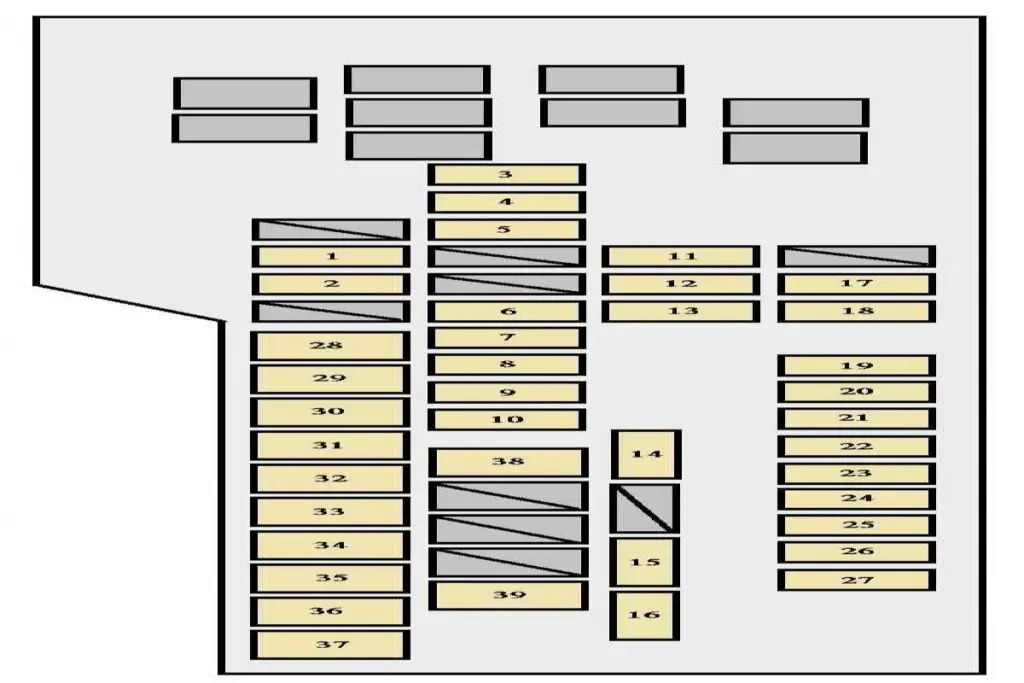
Camry 2007 fuse box where fuse no 4 and 38 are related to the alternator. located in the hood
Maintenance Tips for a 2007 Camry Alternator: Extending its Lifespan
Is it not true that prevention is preferable to a malfunction? We will provide you with the necessary information to ensure that your Camry experiences a smoother and longer-lasting voyage by properly maintaining its alternator.
Regular Vehicle Inspections: Incorporate the alternator into your routine vehicle inspections. Identify any indications of wear or damage and promptly rectify them.
Ensure that the battery is in excellent condition. A well-maintained battery reduces the strain on the alternator.
Make certain that your battery is in top condition and replace it as necessary.
Clean Connections: Corrosion can accumulate on electrical connections over time.
Maintaining a reliable electrical connection necessitates routine cleaning and tightening.
Consistently operate a vehicle. Consistent use can extend the lifespan of your alternator, which may surprise you.
An alternator may experience accelerated deterioration when it remains inactive for extended periods.
A deteriorated or damaged serpentine belt can adversely affect the alternator’s performance, so it is crucial to maintain it with care.
It should be replaced as required. check price below
Order Now and Feel the Difference in performance
A DIY Hero’s Toolkit: Tools and Gear
No hero enters battle without the appropriate equipment. So, what’s in your toolbox?
To ensure you are fully prepared for your alternator mission, we will provide you with a comprehensive checklist that includes everything from safety eyewear to wrenches.
The following is a comprehensive list of the necessary instruments and equipment:
(collection of sockets and wrenches)
Multimeter serpentine belt instrument (if required)
Protective eyewear
Gloves
Jack and Jack are standing.
Screwdrivers
Alternator replacement (if required)
Before commencing, ensure that you possess these instruments in order to facilitate the process.
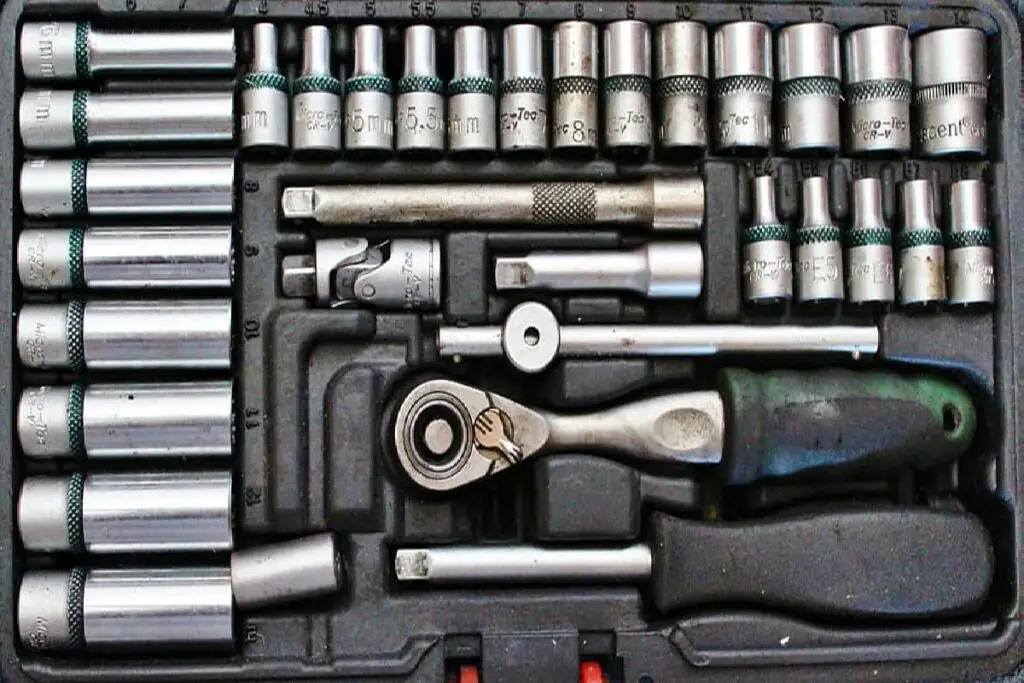
Step-by-step rescue mission: alternator replacement
Here’s where the action happens! We’ll take you through a step-by-step guide to replacing your Camry’s alternator like a seasoned pro.
No need to be a mechanic; we’ve got your back!
This is the location for the action! We will provide you with a comprehensive, step-by-step guide to replacing the alternator in your Camry in a manner that is consistent with the expertise of a seasoned professional.
There is no requirement to be a mechanic; we have your back!
Prioritizing safety: Initially, guarantee that your automobile is situated in a secure, level area. To prevent electrical shocks, engage the parking brake and, if feasible, disconnect the negative terminal of the battery.
Find the alternator. A bracket typically mounts the alternator at the front of the engine. The serpentine belt connects them.
Eliminate the serpentine belt: Using the serpentine belt tool, release the tension on the belt and allow it to slide off the alternator pulley.
Disconnect the wiring: With caution, disconnect the alternator’s electrical connections and wiring harness.
Eliminate the alternator: Carefully remove the alternator by loosening the fasteners that secure it to the bracket.
Install the new alternator: Use the fasteners to position and secure the new alternator in place. Make sure to reestablish the electrical connections and wiring harness.
Use the serpentine belt tool to gently guide the belt back onto the alternator pulley for reattachment.
Assess and reassemble: Start your Camry by reconnecting the negative battery terminal.
Examine the electrical systems to confirm their proper operation and check for the removal of the warning light.
Safety First: Precautions and Protocols
Safety is an absolute requirement for this expedition. We will provide a comprehensive explanation of the safety regulations to ensure that you emerge unscathed from this endeavor, from the disconnection of the battery to the handling of electrical components.
Make sure to disconnect the battery’s negative terminal before working on the alternator.
This safeguards you from electrical impulses and ensures your safety.
Wearing safety equipment is essential.
Gloves and safety eyewear are indispensable companions. They protect your hands and eyes from potential hazards.
Work in an area with adequate ventilation: exhaust emissions can be hazardous; therefore, it is advisable to conduct the repair in an outdoor location or in a well-ventilated area.
Allow yourself ample time. Errors may result from expediting the repair process. Allow yourself ample time, adhere to the procedures meticulously, and maintain composure.
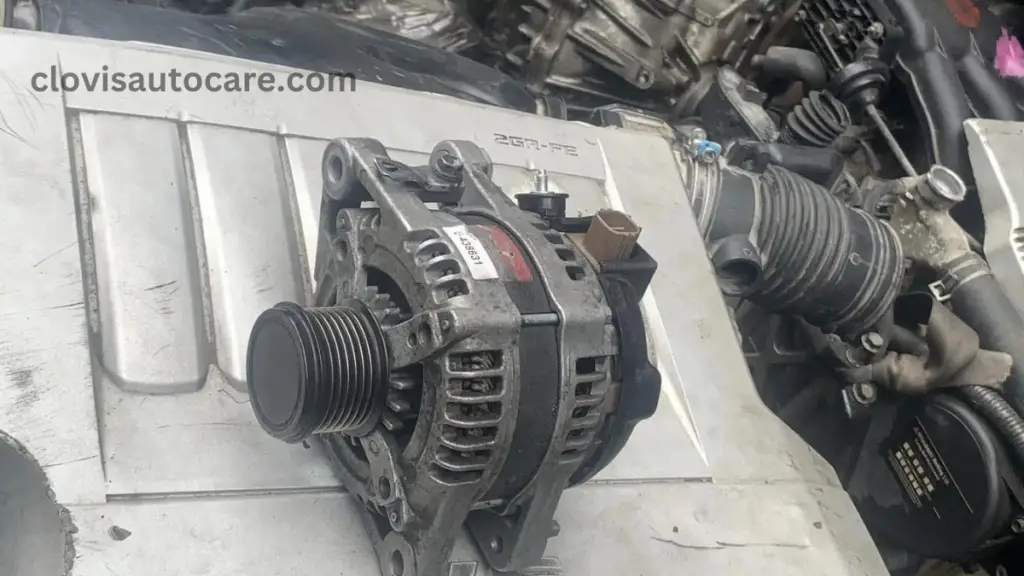
The alternator vs. the battery Faceoff
Have you ever contemplated which would emerge victorious in an electrical confrontation—the alternator or the battery?
We will compare these two dominant entities and provide an explanation of their respective functions within the electrical system of your vehicle.
Consider the alternator to be a power generator. It converts mechanical energy from the engine into electrical energy, ensuring a consistent supply of power to operate the car’s systems and recharge the battery while the engine is running.
The battery functions as a reservoir of electrical energy. The battery releases the electricity it stores from the alternator when you start your automobile or require additional power.
It’s needed for electrical components and engine ignition when not in use.
The alternator’s primary function is to maintain the battery’s charge, which guarantees that you have the necessary electrical power to operate the vehicle.
The alternator functions as the charger, while the battery functions as the storage mechanism. They are a dynamic duo.
V4 vs. V6: Alternator Specifications for 2007 Camry
Now, let’s delve into the differences between the V4 and V6 engine options in the 2007 Camry, including alternator specifications, price differences, and engine capacities. It’s essential to understand these variations, as they can affect your alternator’s performance and overall vehicle experience.
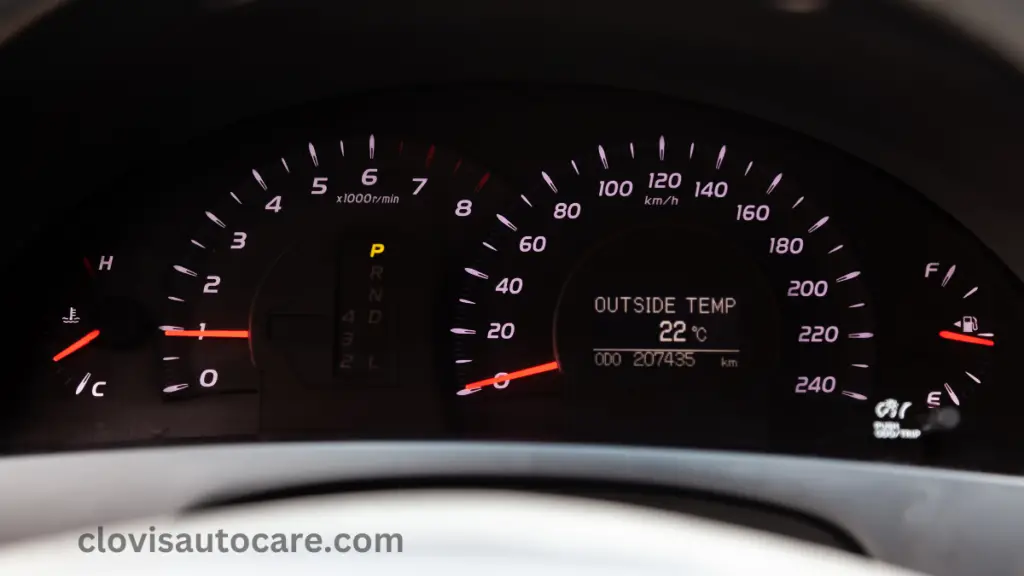
| Feature | V4 Engine | V6 Engine |
|---|---|---|
| Alternator Output | Approximately 80 to 100 amps | Approximately 100 to 150 amps |
| Engine Capacity | 2.4L | 3.5L |
| Price Difference | Generally lower initial cost | Typically, the initial cost is higher |
| Compatibility with Accessories | Suitable for basic electrical accessories | Suitable for vehicles with more electrical demands |
| Fuel Efficiency | Generally offers better fuel efficiency. | May have slightly lower fuel efficiency due to increased power. |
| Maintenance | Typically requires less maintenance. | May need more frequent maintenance due to the higher power output. |
These specifications highlight the key differences between the V4 and V6 engines concerning alternator performance, engine capacity, price differences, and more.
If you’re considering replacing an alternator and upgrading your engine, these factors are critical to making an informed decision.
Aftermarket vs. OEM alternators
There are two primary alternatives to consider when selecting a replacement alternator: aftermarket and OEM (original equipment manufacturer).
Let us investigate the distinctions between these alternatives.
Alternators that are aftermarket:
Third-party manufacturers often produce alternators at a lower cost than original equipment manufacturers.
They offer a wide range of brands and options, so you can choose what best suits your needs and budget.
It is imperative to conduct research and select a reputable brand in order to guarantee the reliability of aftermarket alternators, as their quality may differ.
It is important to verify the warranty terms prior to making a purchase, as they may provide a variety of warranty options.
Original Equipment Manufacturer (OEM) Alternators
Toyota, the vehicle’s original manufacturer, manufactures OEM alternators.
We engineered this product to precisely match the specifications of your vehicle, guaranteeing consistent performance and compatibility.
OEM alternators are generally more costly than aftermarket alternatives; however, they frequently offer a superior level of quality assurance.
An OEM alternator is the optimal choice if you prioritize dependability and require a replacement that precisely replicates the original component.
When selecting between aftermarket and OEM alternators, it is important to take into account your budget, the specific requirements of your Camry, and your preferences for quality and consistency.
Environmental Impact
It is important to consider the environmental impact of alternator replacement.
When starting the car or needing more power, each choice you make retains the electricity the alternator produces and discharges it.
Your alternator decision is no exception to the potential environmental impact that car owners can have on the planet.
When replacing your alternator, it is important to take into account the following environmental factors:
Make sure to recycle your outdated alternator. Alternators contain recyclable materials that mitigate the necessity for mining and manufacturing.
Alternators that are environmentally friendly: Certain manufacturers manufacture generators that are engineered to optimize energy efficiency. These alternators have the potential to decrease the carbon footprint of your vehicle.
Proper Disposal: If you are replacing your alternator independently, it is crucial to dispose of the previous one in accordance with local regulations. Refrain from contributing to landfill waste.
Fuel Efficiency: A properly functioning alternator can indirectly decrease your vehicle’s emissions by improving fuel efficiency.
You can contribute to the reduction of your vehicle’s environmental impact by making eco-conscious decisions during the alternator replacement process.
Important points to keep in mind
Before we conclude, it is important to review the primary points of this comprehensive guide:
The alternator is an essential component of your 2007 Camry, as it supplies electrical power to operate the vehicle’s systems and recharge the battery.
The battery warning light on your dashboard, a flickering dashboard, and dim lighting are all indicators of alternator issues.
It is imperative to adhere to safety protocols and conduct routine maintenance when servicing your alternator.
The alternator and battery work together to maintain your vehicle’s electrical power
When contemplating alternator replacement, it is important to be aware of the distinctions between V4 and V6 engines, such as the alternator specifications, engine capacity, price differences, and maintenance requirements.
Based on your budget and quality preferences, select between aftermarket and OEM alternators.
Consider the environmental impact of your alternator replacement choices, including eco-friendly options and recycling.
With the information you have acquired, you can confidently address alternator issues and ensure the seamless operation of your 2007 Camry.

Camry 2007 in good condition after fixing alternator problems
Conclusion
You’ve journeyed through the inner workings of your 2007 Camry alternator, armed with insights into specifications, common issues, DIY replacement, maintenance tips, and the environmental impact.
Regardless of your V4 or V6 engine, you now possess the skills to expertly navigate alternator challenges.
Remember, safety is your sidekick, and maintenance is your superpower. Now, go out there and be the hero of your ride!
FAQs
Q1: How long does a typical alternator last in a 2007 Camry?
The alternator in a 2007 Toyota Camry typically lasts between 80,000 and 150,000 miles, or 7 and 10 years, under normal driving conditions. However, its lifespan can vary depending on factors such as driving habits, climate conditions, electrical load, alternator quality, and regular maintenance. If your 2007 Camry has over 100,000 miles, it’s advisable to have the alternator inspected during routine maintenance to catch any early signs of wear.
Q2: Can I drive my Camry with a failing alternator?
Driving a Camry with a failing alternator is not recommended and can be dangerous. While you may be able to drive for a short distance using just the battery power, the car will eventually stall once the battery is drained, potentially leaving you stranded. It’s best to have your Camry towed to a mechanic for alternator replacement as soon as you notice signs of failure, such as dimming lights or battery warning indicators.
Q3: What’s the cost of a 2007 Camry alternator replacement?
The cost to replace an alternator in a 2007 Toyota Camry typically ranges from $400 to $600, including parts and labor. The alternator itself usually costs between $200 and $350, while labor charges can add another $150 to $250. However, prices may vary depending on your location, the specific mechanic or dealership, and whether you choose an OEM or aftermarket part.
Q4: Can I replace the alternator myself if I’m not a mechanic?
Replacing the alternator in a 2007 Toyota Camry is possible for a DIY enthusiast with some mechanical experience, but it can be challenging for beginners. The process involves disconnecting the battery, removing the serpentine belt, and disconnecting electrical connections, which requires careful attention to detail. While it can save on labor costs, incorrect installation can lead to electrical issues or damage, so it’s often safer to have a professional mechanic perform the replacement if you’re unsure of your skills.
Q5: How often should I check my Camry’s alternator for issues?
It’s recommended to have your Toyota Camry’s alternator checked during regular vehicle maintenance, typically every 60,000 to 100,000 miles or annually. However, you should also be alert to signs of alternator issues, such as dimming lights or battery warning indicators, during scheduled maintenance. If your Camry is over 7 years old or has more than 100,000 miles, consider having the alternator inspected more frequently, about every 6 months, to catch potential problems early.
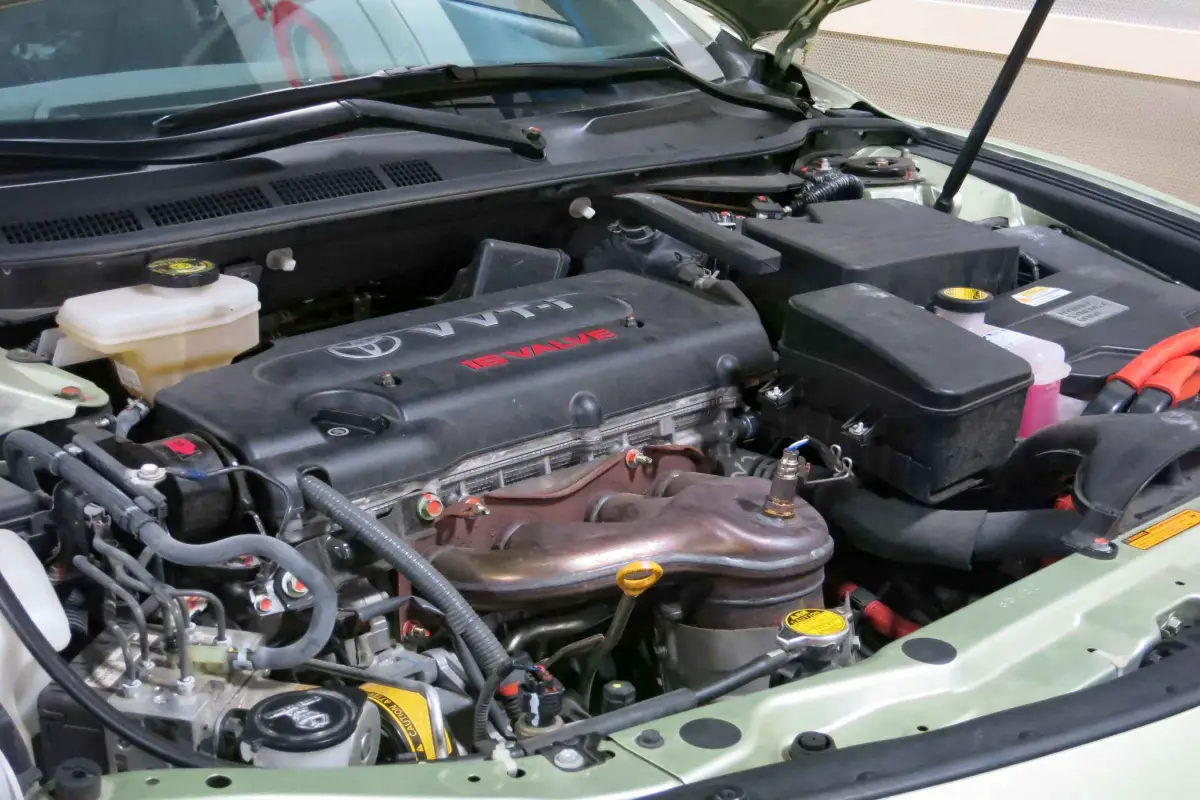

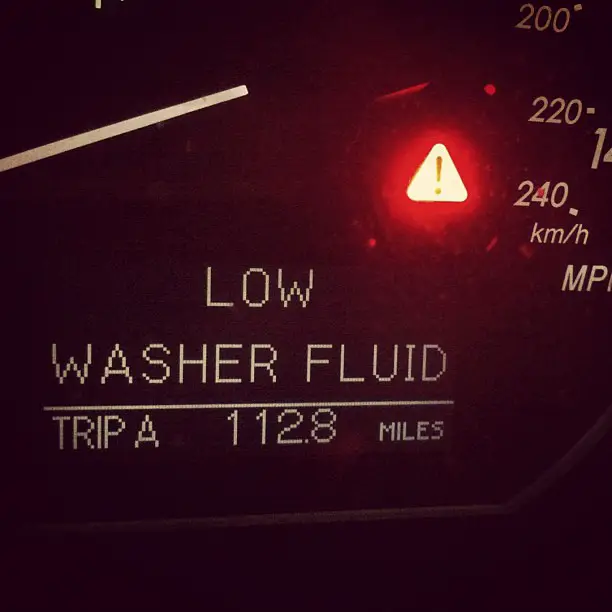
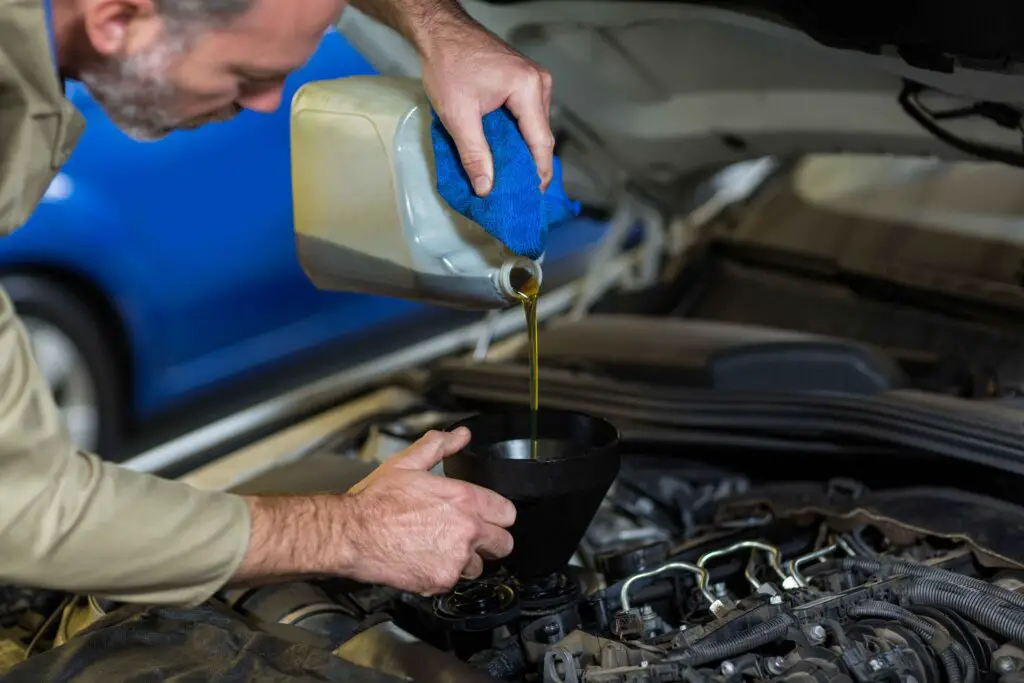
Leave a Reply